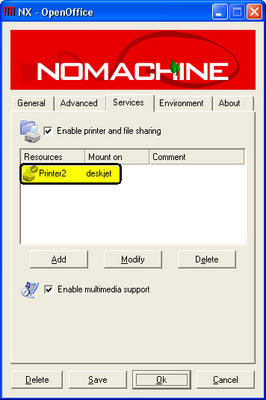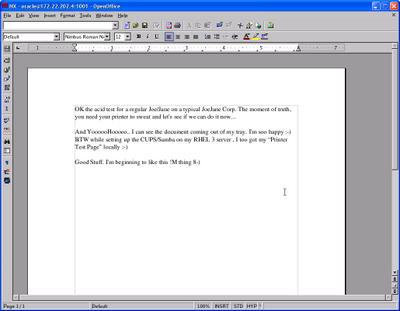Alrite fellas, here I tried at home running the Terminal Server/Services on RHEL 3 on a application mode. What you'll be needing is...
- CUPS/Samba running on your Terminal Server (To print your work locally)
- Share your printer over network(if you have one) or just have cups find it locally.
- You'll need OpenOffice installed on your Linux Server.
- NX Client binary on your machine
- NX Server installed on your server. (see the following post Setting up FreeNX )
And voila you have a not only running OpenOffice writer program but also you can print it locally.
Starting up the OpenOffice application

Setting up the printer

And working with it!

Enjoy!
PS: We will try more applications on terminal services in the coming days.
Comments
Post a Comment